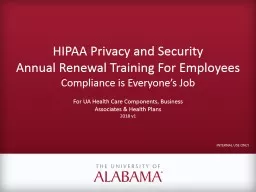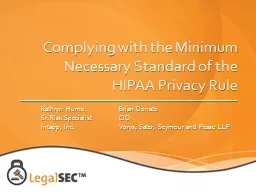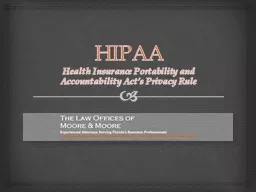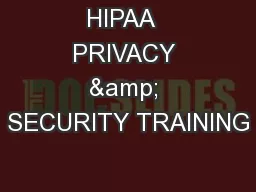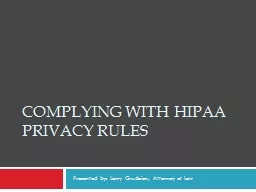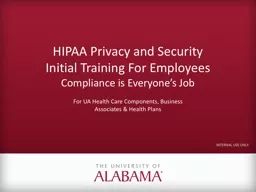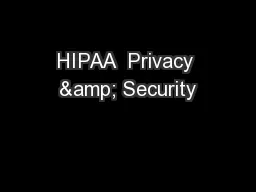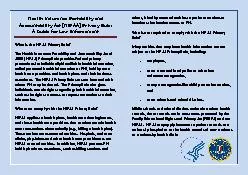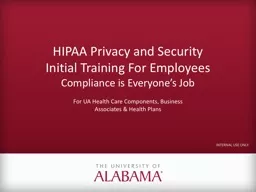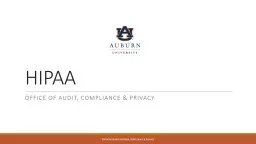PPT-HIPAA Privacy and Security
Author : pasty-toler | Published Date : 2018-11-02
Annual Renewal Training For Employees Compliance is Everyones Job For UA Health Care Components Business Associates amp Health Plans 2018 v1 INTERNAL USE ONLY
Presentation Embed Code
Download Presentation
Download Presentation The PPT/PDF document "HIPAA Privacy and Security" is the property of its rightful owner. Permission is granted to download and print the materials on this website for personal, non-commercial use only, and to display it on your personal computer provided you do not modify the materials and that you retain all copyright notices contained in the materials. By downloading content from our website, you accept the terms of this agreement.
HIPAA Privacy and Security: Transcript
Download Rules Of Document
"HIPAA Privacy and Security"The content belongs to its owner. You may download and print it for personal use, without modification, and keep all copyright notices. By downloading, you agree to these terms.
Related Documents

